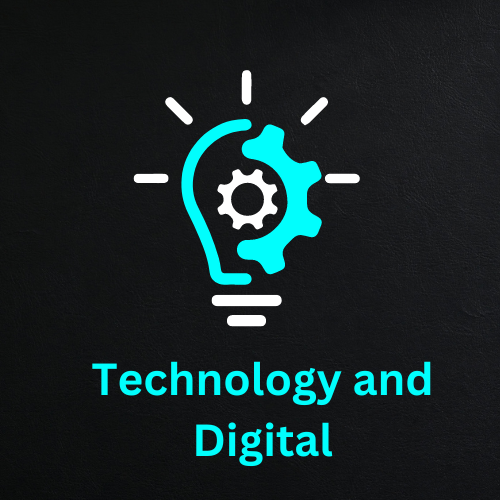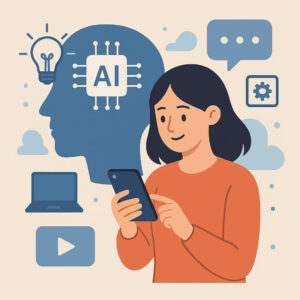Digital Twin Technology: Bridging Virtual and Reality

The gap between physical systems and virtual models has narrowed dramatically, thanks to Digital Twin technology. In 2025, digital twins are no longer experimental prototypes—they are driving real decisions in industries from manufacturing to smart cities. This article offers a fresh, practical view of how digital twins work, where they deliver the most value, what challenges must be managed, and how an organization can get started wisely.
What Is a Digital Twin — and Why It Matters
A digital twin is a dynamic, real-time virtual replica of a physical system, process, or object. It receives data from sensors, IoT devices, and operational systems, and mirrors behavior and conditions of its real-world counterpart. Because it reflects live states, it allows simulation, predictive analysis, and control before actions occur in the physical realm.
Unlike static models or CAD drawings, a digital twin evolves as conditions change—wear, faults, usage cycles, environmental variation. That adaptiveness is what gives it power.
Key Components of a Digital Twin
- Physical System: The real-world object or process being mirrored (e.g. a turbine, a factory line, a building).
- Sensors & IoT Integration: Instruments that feed real-time data (temperature, pressure, vibration, power consumption, etc.).
- Data Infrastructure & Connectivity: Networks, gateways, edge or cloud ingestion systems to transport and preprocess data.
- Simulation & Analytics Engine: Models, machine learning, rules engines that replicate behavior and predict future states.
- User Interface & Control Layer: Dashboards, alerts, UI/UX that let users explore twin data and take actions (e.g. send commands back).
Practical Tip:
Start with a small, well-defined asset—like a single pump or HVAC unit. Build its digital twin first. Gain confidence and learn the data flows before scaling to more complex systems.
Where Digital Twins Add Strong Value in 2025
Adoption of digital twins has accelerated in recent years. Across industries, their real-time fidelity and predictive power deliver meaningful ROI when applied carefully.
Manufacturing & Industry 4.0
Production lines equipped with digital twins can simulate “what-if” scenarios: what happens if a machine slows, or a conveyor belt jams? Predictive maintenance becomes routine, downtime gets reduced, and throughput improves. Quality defects can be flagged before they affect batches.
Smart Cities & Infrastructure
Cities now build digital replicas of utility grids, traffic networks, and building systems. When traffic data shows congestion, the twin can test signal changes virtually before applying them. During storms, digital twins of drainage systems help forecast flood zones and guide preventive action.
Energy & Utilities
Wind farms, solar arrays, and power substations benefit from digital twins that track performance, estimate degradation, and optimize energy flow. When paired with demand forecasts, the twin may suggest shifting loads or adjusting capacity in real time.
Healthcare & Medical Devices
Medical devices and hospital systems can have twins that simulate patient usage or device wear. That enables proactive calibration, maintenance scheduling, and safety testing in virtual space before physical risk.
Recent Trend:
“Edge digital twins” are emerging: processing real-time data at the edge (close to the device), reducing latency and dependence on cloud connectivity. This is especially useful in environments with intermittent connectivity or tight real-time constraints.
Practical Tip:
Segment assets by criticality and complexity. Apply digital twins first to those that offer highest potential ROI—where failure is costly or downtime impacts revenue. Use that success to expand adoption more broadly.
Benefits, Challenges & Risks of Digital Twin Deployment
Major Benefits
- Predictive Maintenance & Reduced Downtime: Predict faults before they happen and schedule repairs proactively.
- Optimization & Simulation: Test different operating settings virtually to find optimal configurations without risking real systems.
- Better Decision Making: Decisions become data‑driven, based on live models and forecasts rather than hunches.
- Cost Savings: Fewer emergency repairs, lower spare parts inventory, and more efficient operations.
- Improved Safety: Faults or hazardous states can be detected and mitigated in the twin before they manifest in the real world.
Key Challenges & Risks
- Data Quality & Calibration: Inaccurate or delayed sensor data undermines the twin’s fidelity. Poor calibration leads to misleading models.
- Integration Complexity: Legacy systems, proprietary protocols, and fragmented architectures complicate connecting assets to the twin.
- Computational Load: High-fidelity models, especially physics-based simulations, demand significant compute resources.
- Security & Privacy: The digital twin becomes a target—exposing system internals or control interfaces can be dangerous.
- Model Drift: As physical systems degrade or change, the twin’s model becomes outdated unless it is continuously tuned and updated.
Practical Tip:
Implement feedback loops. After the twin issues predictions or suggestions, compare them with real outcomes. Use discrepancies to recalibrate models. Continuous model adaptation keeps the twin accurate over time.
How to Roll Out a Digital Twin in an Organization
Step 1: Define Scope & Objectives
Begin with clear goals. Whether reducing downtime, optimizing throughput, or improving quality, clarity of purpose guides design. Select a pilot asset or process with known parameters and measurable outcomes.
Step 2: Assess Sensor & Connectivity Readiness
Evaluate existing sensor coverage, network reliability, latency, and bandwidth. Where necessary, add or upgrade sensors, install industrial gateways, and ensure reliable edge/cloud connectivity.
Step 3: Choose Modeling Approach
Decide between physics-based models, data-driven ML models, or a hybrid. Physics-based models use first principles; ML models use past data to predict behavior. Hybrid models often offer the best of both worlds.
Step 4: Build Data Infrastructure
Design pipelines that ingest, preprocess, transform, and store data. Use edge processing to reduce volume, filter noise, and apply initial analytics. The cloud or central platform handles deeper simulation and long-term storage.
Step 5: Develop Twin Logic & Interfaces
Construct the simulation/analytic engine. Build dashboards, alert systems, and control loops (if two‑way control is intended). Ensure safe “command back to device” pathways with fallback and overrides.
Step 6: Validate & Calibrate
Run the twin alongside the real system (in shadow mode) for a period. Compare outputs, detect deviations, adjust parameters, and tune model fidelity before allowing control or heavy reliance.
Step 7: Scale & Evolve
Once the pilot twin delivers results, scale to additional assets. Modularize twin templates and patterns so that adding new twins becomes more efficient. Continue refining models and adding adaptive learning.
Practical Tip:
Create a “twin library” of asset templates, sensor patterns, and control logic. That library accelerates future twin deployment and ensures consistency among twins.
Hypothetical Use Case: Improving a Factory Line
A widget manufacturing line faces random downtime and quality variation. A digital twin is created for one assembly cell—monitoring vibration, temperature, motor current, and throughput. The twin simulates alternate operating speeds and settings. It flags that when motor current spikes, the vibration amplitude crosses a threshold, predicting mechanical wear. Maintenance is scheduled before a failure occurs, and throughput is adjusted for smoother operation. Over weeks, defects drop and uptime increases.
A second cell is onboarded, and soon the twin model library is used across the entire plant. Decision making transforms from reactive fixes to predictive control.
Emerging Trends in Digital Twin Technology
Generative AI & Twin Augmentation
AI now helps build twin models automatically by analyzing historical data and generating simulation logic. That reduces engineering effort and speeds time to twin realization.
Federated & Collaborative Twins
Systems are combining multiple twins across organizations, such as supply chain twins. One company’s twin may interact with a supplier’s twin to simulate impacts of supply delays or material variance.
Augmented Reality & Mixed Reality Integration
AR overlays twin data directly onto physical assets. Field technicians wear AR glasses and see temperature, stress, or failure probabilities projected onto the machine they’re inspecting, guided by the twin’s insights.
Edge-Native Twins
Rather than hosting twin logic purely in the cloud, parts of the model run at the edge to reduce latency and dependency on constant connectivity—especially important for remote or disconnected environments.
Practical Tip:
Experiment with hybrid architectures—run critical parts of the twin locally (edge) and delegate heavy simulation tasks to cloud or central systems. This balances responsiveness with modeling power.
Conclusion & Invitation to Act
Digital twin technology is not futuristic—it is becoming essential. When deployed thoughtfully, it offers predictive power, operational efficiency, and deeper insights into complex systems. Yet success depends on model fidelity, continuous calibration, robust data pipelines, and security guardrails.
Which machine, process, or system in your domain could benefit most from a digital twin first? Start small. Build, test, measure, and iterate. Share your plan, experiments, or roadblocks in the comments below—learning together accelerates progress.




